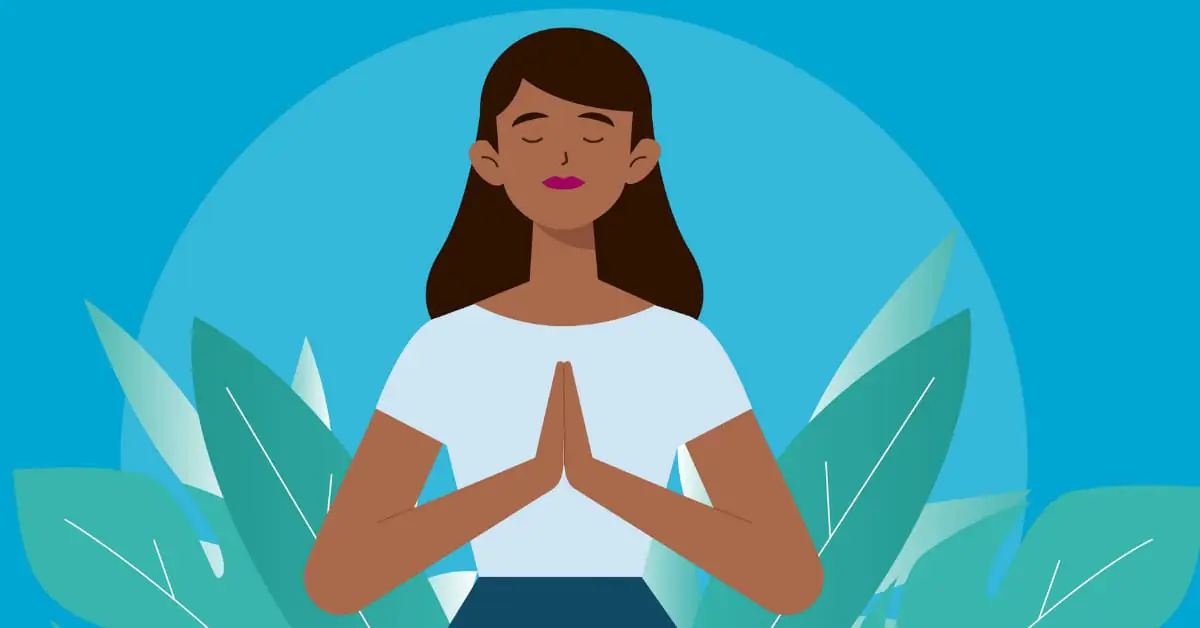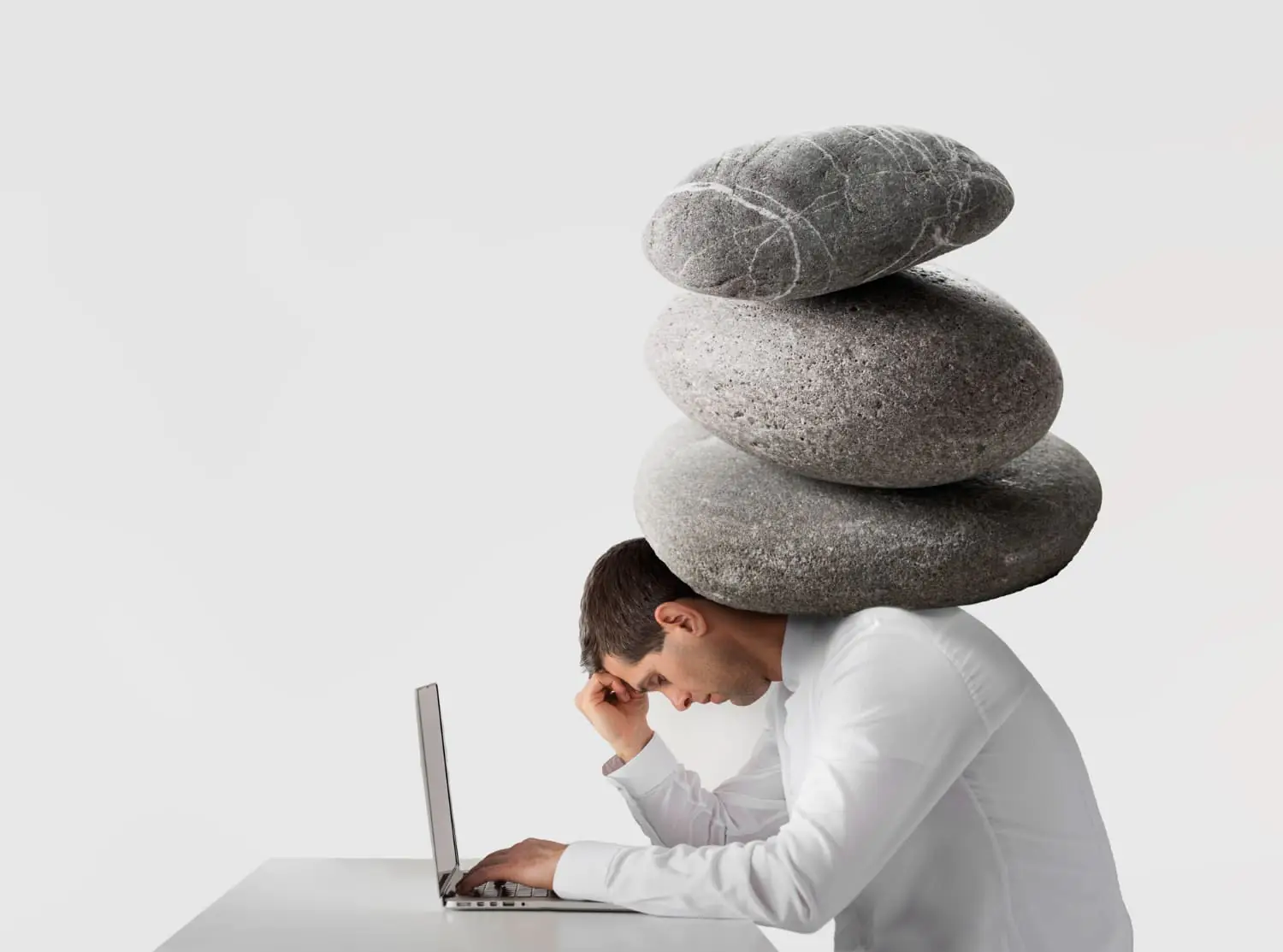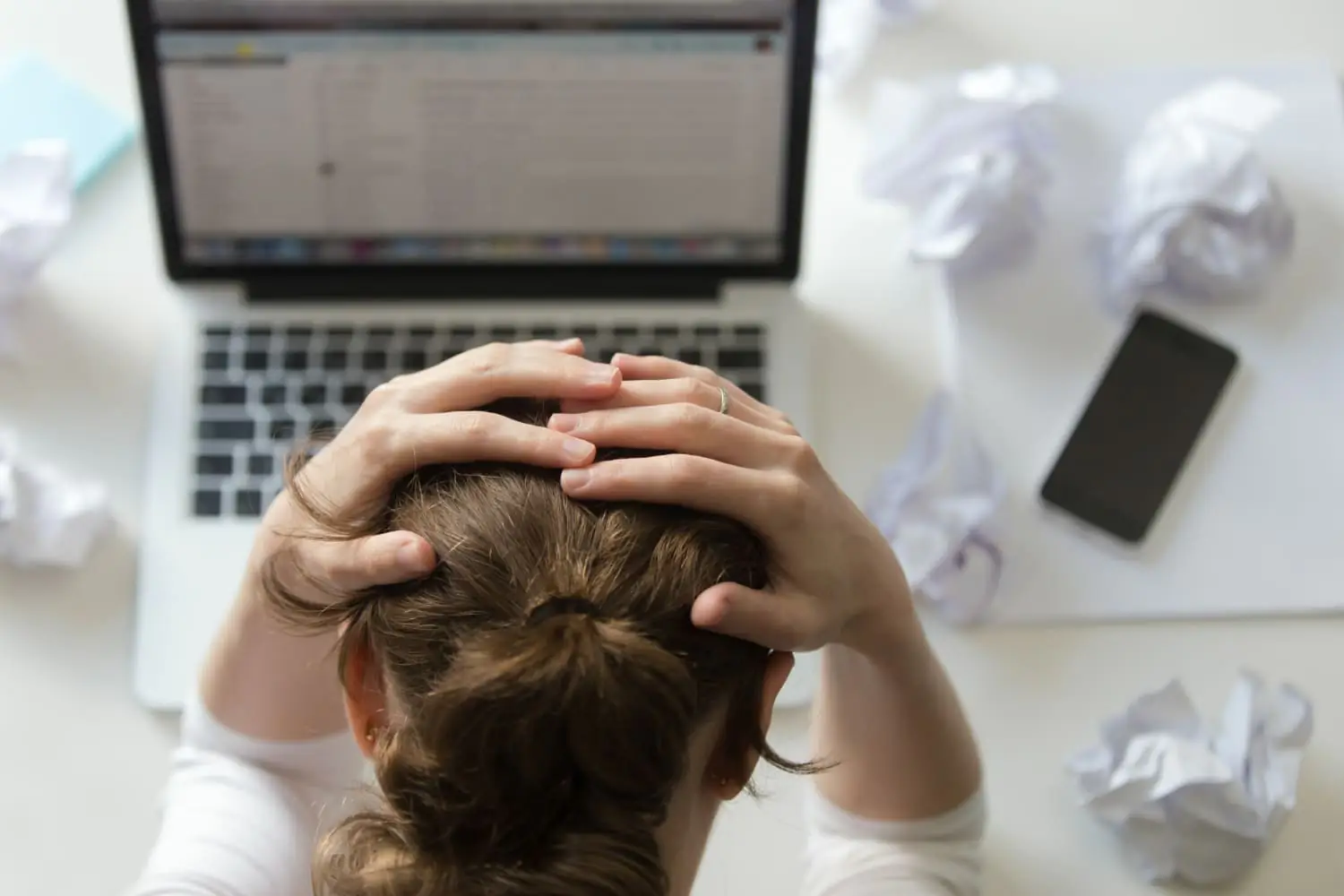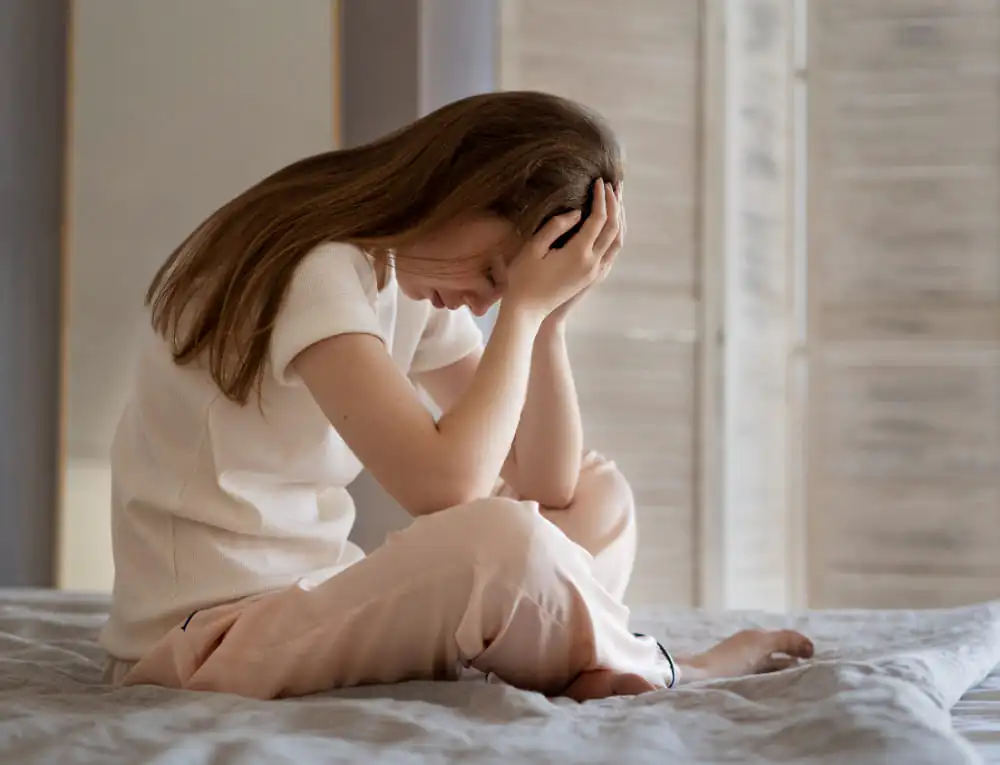
What is Anxiety?
Most of us; We may feel anxiety from time to time when faced with stressful or challenging situations, such as sitting for an exam, interviewing for a job, having a first appointment, experiencing financial difficulties, or taking a medical test. This anxiety is a natural reaction of the body to stressful stimuli and can encourage the person to reveal some beneficial aspects such as activation, making them work harder, and thinking multidimensionally.
However, if anxiety becomes severe or persistent enough to affect your daily life and relationships, it may be a sign of an underlying mental health disorder. If left untreated or untreated, it is difficult to control and may persist for a very long time. Fear, an emotion often confused with anxiety, is an emotional response to a real or perceived threat, while anxiety is the anticipation of a future threat. Although these two situations are close to each other, they differ; Fear is often associated with increases in autonomic arousal, momentary thoughts of danger, and fleeing behaviors, which are essential for the fight-or-flight response. Anxiety, on the other hand, is generally more associated with muscle tension, agitation and preparedness for future danger, and avoidance behaviors. Sometimes avoidance behaviors can make the person feel as if the level of fear or anxiety is decreasing, but this does not create a long-term solution. Anxiety disorder can be explained in the form of a cycle. Initially, the possible “danger” that triggers anxiety appears in one’s perception to be greater than its realistic possibility. This danger is often just a mental thought, and it often leads us to get stuck in scenarios that we have not encountered or will never encounter. These thoughts create an increasingly intense and persistent anxiety. While trying to prevent anxiety, the person restricts his life, avoids anxiety and begins to lead a more isolated life. However, this isolation magnifies anxiety and causes an internal vicious cycle. Although anxiety normally helps to cope with stressful situations, when it becomes a disorder, the person finds it difficult to carry on with life. In this case, it may be important to seek professional help. Online therapy can provide support as an effective method of coping with an anxiety disorder.
Anxiety Disorder Symptoms
Symptoms of an anxiety disorder can differ depending on the type of disorder. In addition, symptoms can vary from person to person and depending on the situation. However, in general, the symptoms related to anxiety are similar to each other.
- Physical Symptoms
- Psychological Symptoms
- Behavioral Symptoms
Psychological Symptoms of Anxiety
Anxiety disorder prevents the person from daily functions and negatively affects social, family and work life. The person overreacts to situations that trigger anxiety and may lose emotional control.
- Feeling restless or nervous
- Easily fatigued
- Difficulty concentrating or clearing of the mind
- Irritability
- Sleep disturbance (difficulty sleeping, difficulty staying asleep, or restless, unsatisfactory sleep)
Physical Symptoms of Anxiety
- Heart palpitations
- Numbness or tingling in the hands and feet
- Digestive system problems such as nausea
- Shortness of breath and rapid breathing (hyperventilation)
- Dithering
- Dry mouth
- Tension in the muscles
- Excessive sweating or cooling of your hands
Behavioral Symptoms of Anxiety
- Avoidance behaviors: The tendency to avoid situations or places that trigger anxiety can limit a person’s normal life. For example, behaviors such as avoiding crowded places, not attending social events, or staying away from challenging work tasks.
- Increased search for reassurance: The person may constantly seek approval or reassurance from others to calm their anxiety. This may alleviate anxiety temporarily, but it can make it worse in the long run.
- Constant movement to relieve physical symptoms: The person may constantly move around, wave their hands, stamp their feet, or perform other physical movements to relieve anxiety.
Types of Anxiety
- Generalized Anxiety Disorder (GAD)
- Social Anxiety Disorder
- Panic Attacks and Symptoms
- Other Types of Anxiety Disorders
Generalized Anxiety Disorder (GAD)
The most common type of anxiety disorder is known as generalized anxiety disorder (GAD). In this type, the person feels anxious all the time, and anxiety pervades all areas of daily life. It is characterized by excessive anxiety and worry about more than one issue. The severity, duration, and frequency of these anxieties are disproportionate to the actual probability of the expected event. The person has difficulty controlling anxiety and coping with anxious thoughts that distract attention from daily tasks. Generalized Anxiety Disorder makes even routine worries excessive in daily life and is often accompanied by physical symptoms (restlessness, muscle tension, sleep problems). One of the most common things that a person in this situation says is “
Risk Factors:
- Temperamental: Factors such as behavioral inhibition, negative emotional reactions (neuroticism), and paying attention to threats are associated with GA.
- Environmental: Childhood difficulties and overprotective parenting are linked to GA.
- Genetic and Physiological: GAD has a genetic component; these risk factors are also shared with depression and other anxiety disorders.
Social Anxiety Disorder
Social anxiety disorder is characterized by a marked fear or anxiety of the individual towards social situations in which he may encounter a possible observation by others. These situations include a variety of examples, such as social interactions (e.g., having a conversation, meeting unfamiliar people), being observed (e.g., eating or drinking), and performing in front of others (e.g., giving a speech).
The individual carries the fear that he will be evaluated in a negative way by others. This can create feelings of embarrassment or boredom and is associated with anxiety about rejection or hurting others. Social situations almost always evoke fear or anxiety. These social situations are either avoided or forced to participate with intense anxiety or fear. The fear or anxiety felt by the individual is disproportionate to the real threat of the social situation and the cultural context of society.
The main characteristic is the fear of being observed and negatively evaluated by others. The individual worries about being considered weak, stupid, boring, or scary. It is also common to have a fear of showing signs of anxiety (for example, trembling, sweating, flushing) and leading to a negative evaluation of these situations. One’s attention is directed towards the ‘image’ of oneself and how oneself appears in social situations.
People with social anxiety can often be perceived as introverted and have difficulty opening up to others. These people may prefer to work in jobs that do not require social contact.
Risk Factors:
- Temperamental: Behavioral inhibition, fear of negative evaluation, high negative emotionality (neuroticism), and low extraversion are associated with social anxiety disorder.
- Environmental: Negative social experiences, peer bullying during childhood, mistreatment, or adverse life circumstances increase the risk of social anxiety. In addition, cultural norms that trigger social anxiety in collectivist cultures may be influential.
- Genetic and Physiological: Social anxiety disorder has a genetic component. In particular, the susceptibility to behavioral inhibition is strongly influenced genetically. These genetic tendencies can also be reinforced by modeling parents’ socially anxious behaviors. In individuals with a family history of social anxiety, the risk increases 2 to 6 times.
Panic Attacks and Symptoms
Panic disorder is a disorder in which an individual experiences unexpected panic attacks and has a constant concern about the possible recurrence of these attacks. During attacks, both physical and mental symptoms can be experienced intensely. It is common to make significant and maladaptive changes in behavior related to attacks (such as avoiding exercise or unfamiliar environments to prevent panic attacks). Individuals with panic disorder may develop avoidance behaviors in their daily lives to prevent the recurrence of these attacks. This can cause significant discomfort in social and functional areas.
Symptoms of Panic Attacks:
A panic attack is a sudden wave of intense feelings of fear or discomfort that peaks within a few minutes. At least four of the 13 symptoms are experienced during the attack. For example;
- heart palpitations,
- dyspnea
- Dizziness
- Fear of death
Symptoms such as are typical symptoms of a panic attack.
Unexpected and Expected Attacks:
- Unexpected Panic Attacks: They can occur without any obvious triggers, for example, when the person is resting or sleeping.
- Expected Panic Attacks: They occur depending on a specific situation or trigger.
Both types of attacks can be part of panic disorder. However, in order for a diagnosis to be made, at least one unexpected panic attack must have been experienced.
Risk Factors:
Both genetic and environmental factors play an important role in the development of panic disorder:
- Temperamental: Predisposition to negative emotions, sensitivity to anxiety, and fear of harm.
- Environmental: Childhood traumas, parental protectionism, economic hardship, and stressful life events.
- Genetic and Physiological: Having a family history of anxiety, depression, or bipolar disorder. Conditions such as respiratory sensitivity and asthma can increase the risk of panic disorder.
Other Types of Anxiety Disorders
- Separation Anxiety Disorder: It is characterized by the fact that the individual experiences excessive anxiety in the event of separation from a person to whom he is attached. This disorder is especially common in children, but it can also occur in adults. During the separation, intense fear, panic, restlessness and physical symptoms (e.g. nausea or headache) may occur. This condition, which can affect daily activities and social relationships, can be managed with therapy and appropriate support.
- Selective Speechlessness: It is the condition that he does not speak in certain social settings (such as school) but can speak in other settings. This state of not speaking seriously affects a person’s academic or professional achievements and interferes with normal social communication.
- Specific Phobia: It is a constant state of fear, anxiety, or avoidance of certain objects or situations. This fear is often disproportionate to the actual risk and arises as an immediate reaction to the phobic situation. Specific phobias; Animals can be classified as habitat, blood-injection-injury, conditions, or other categories.
- Agoraphobia: It is the individual’s experience of intense fear and anxiety in various situations such as public spaces, open spaces, closed places, waiting in line, being in a crowd or leaving the house alone. The person feels that these situations are made more frightening by the thought that it may be difficult to escape or that help cannot be obtained. Such environments are usually avoided or endured with a companion.
- Substance/Use-Related Anxiety Disorder: This disorder includes anxiety symptoms that occur as a result of the use, intoxication, or withdrawal of a substance or medication.
- Anxiety Disorder Due to Another Medical Condition: In this case, the symptoms of anxiety are caused by the physiological effects of another medical condition. For example, hormone disorders or neurological diseases can cause this type of anxiety.
What Causes Anxiety?
Although it is not known exactly why anxiety disorders occur, it is thought that various biological, environmental and psychological factors come together to trigger this condition. Some factors for anxiety:
- Life Experiences and Environmental Factors
- Genetics and Family History
- Biological and Physiological Factors
- Personality Traits
This disorder, which begins in childhood, adolescence or early adulthood, is associated with both genetics and life experiences.
- Life Experiences and Environmental Factors
- Childhood traumas (such as growing up in an anxiety-filled environment, experiencing loss, neglect or abuse).
- Stressful or challenging life circumstances (financial difficulties, separations, job loss, homelessness).
- Psychological processes such as insecure attachment styles and fear of separation.
- Genetics and Family History
- Having a family history of anxiety disorder or other psychological problems can increase an individual’s risk of developing this disorder.
- The presence of a close relative with a history of addiction can be a risk factor for anxiety disorders.
- Biological and Physiological Factors
- Brain chemistry: Prolonged or severe stress can alter the chemical balance of the brain, which can lead to the appearance of anxiety.
- Medical conditions: Physical health problems such as thyroid problems, heart disease, diabetes, and chronic pain can increase anxiety.
- Caffeine, stimulants, or certain medications can negatively affect anxiety levels.
- Personality Traits
- Individuals who are introverted or experience high levels of emotional intensity (neuroticism) are more likely to develop anxiety.
Anxiety disorder, like other psychological illnesses, has a complex structure that cannot be attributed to a single cause. Alterations in brain chemistry, genetic predisposition, personal experiences and environmental influences are the main factors that play a role in the development of this disorder. However, it is possible to cope with this disorder with early diagnosis and appropriate treatment methods.
Anxiety Treatment Methods
There is no single solution for anxiety disorder. Because this situation may differ according to personal characteristics, events and the biological structure of the individual. Therefore, it is very important to get expert support to treat anxiety and control its symptoms.
Anxiety Treatment with Therapy Methods
Psychotherapy is one of the most effective approaches to treating anxiety disorder. Therapy helps the individual understand the state of anxiety, recognize its triggers, and develop new ways of coping with these situations.
Cognitive Behavioral Therapy (CBT): CBT, one of the most widely used therapies, allows an individual to recognize negative thought patterns and irrational beliefs that cause anxiety. Later, these thoughts are replaced with realistic and positive approaches. In addition, CBT provides the individual with skills to cope with stress and anxiety. According to this school, anxiety can be summarized as overestimating the probability of the threat and underestimating the ability to cope with this threat. It is attributed to an underestimation of the resources used to cope, and an uncontrollability and inability to cope with potentially disturbing events.
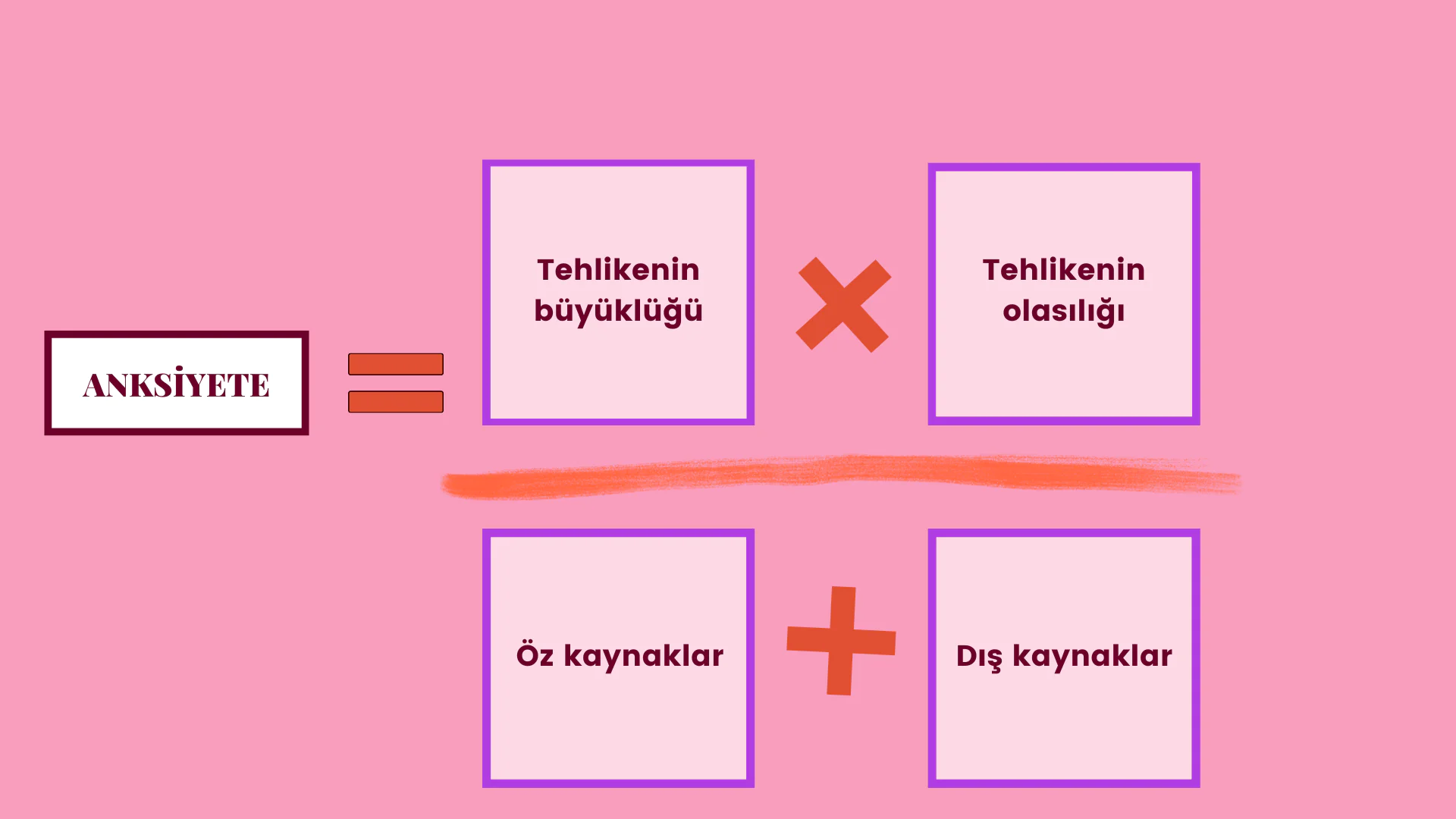
Exposure Therapy: This method, which is especially used in the treatment of phobias, social anxiety and post-traumatic stress disorder (PTSD), gradually exposes the individual to situations that cause anxiety, allowing him to face these fears. Relaxation and mindfulness techniques applied under the guidance of a therapist help to manage anxiety.
Dialectical Behavior Therapy (DBT): DBT is a method developed especially for individuals who experience intense emotional fluctuations. Skills such as mindfulness, emotion regulation, interpersonal effectiveness, and resilience to adversity are taught.
Acceptance and Commitment Therapy (ACT): This approach encourages the individual to develop behaviors in line with life values by accepting their thoughts and feelings instead of suppressing them. ACT is an effective method, especially in the treatment of generalized anxiety disorder and depression. Medical Treatment and Drugs In some cases, medication can be used as a supplement to therapy. Commonly used types of drugs include:
Lifestyle Changes and Coping Strategies
- Exercise regularly. Research shows that exercise significantly reduces anxiety symptoms.
- Avoiding caffeine and other stimulants.
- Getting enough sleep and establishing a regular sleep routine.
- Practicing stress management techniques such as deep breathing, yoga, or muscle relaxation exercises.
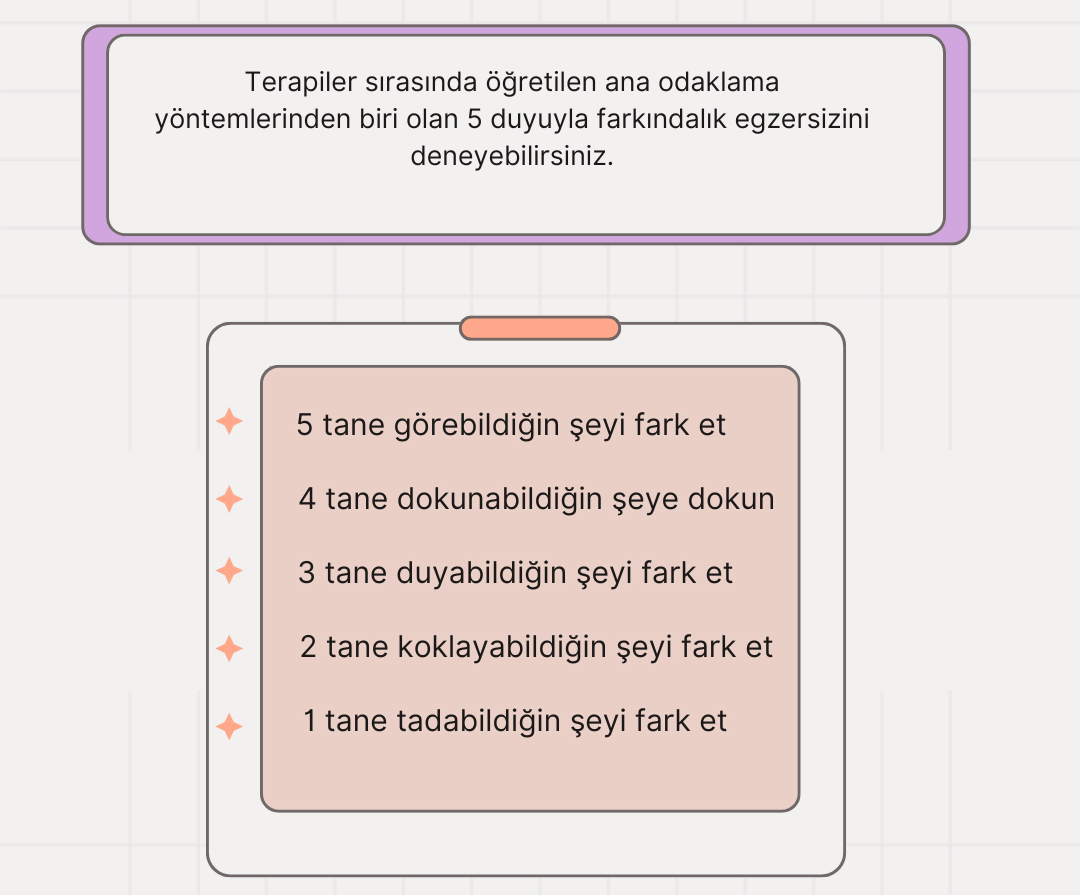
Anxiety disorder treatment is personal and the process requires patience. A combination of different methods, such as therapy, medication, or lifestyle changes, can help an individual manage anxiety. Therefore, getting support from a mental health professional is the most important step in this process. With the right approach, anxiety can be managed and a better quality of life becomes possible.
“Humans have the opportunity to make free choices, unlike animals that act on instinct. This is both pleasant and frightening (Kierkegaard, 1985)
To investigate and understand your own anxiety, you can answer the following questions:
- What are three things that trigger your anxiety?
- What are your physical experiences when you notice that your anxiety level is high?
- What thoughts are running through your mind when you’re anxious?

